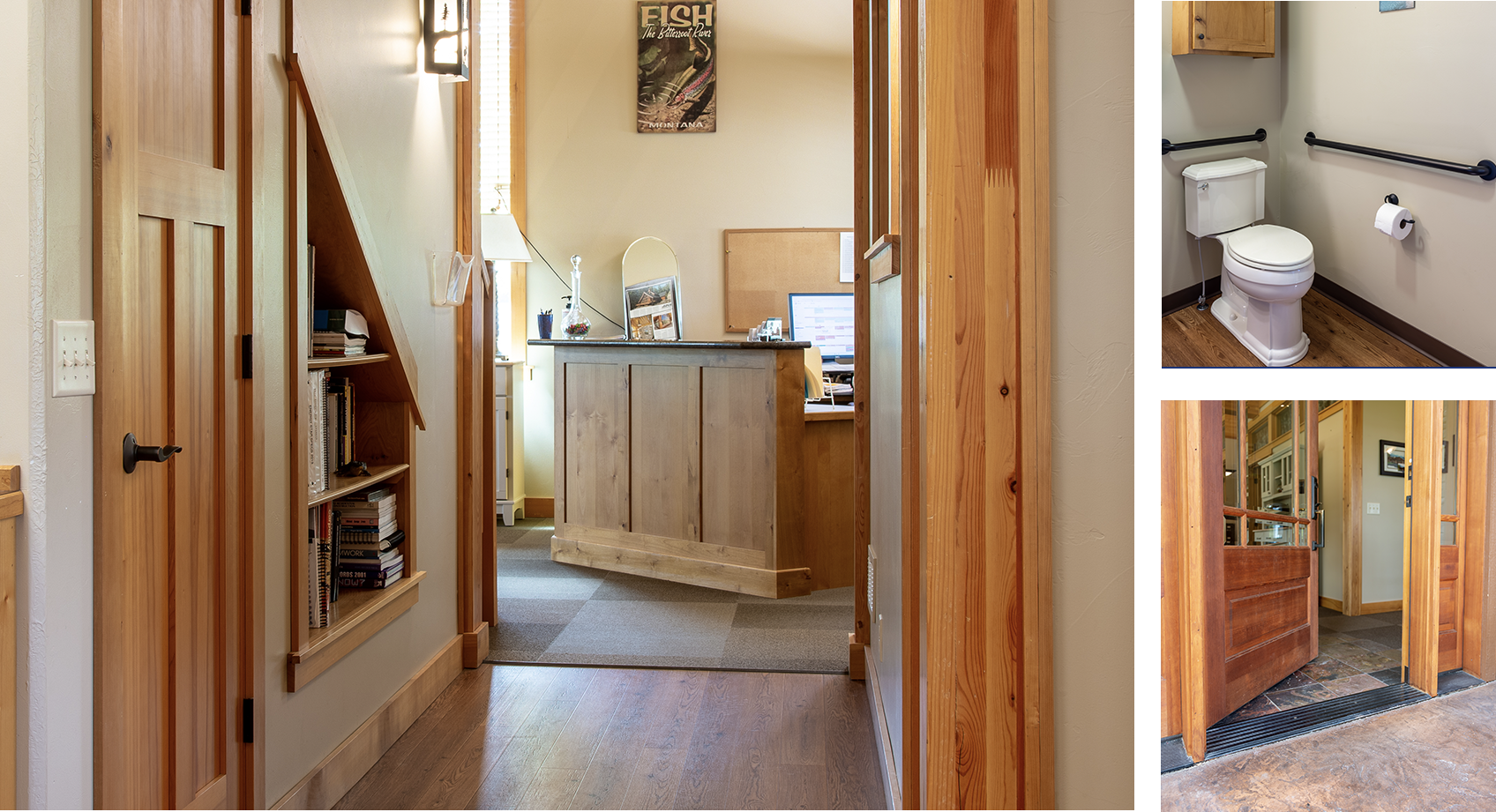What is Universal Design?
The Universal Home

What makes a home design universal? It’s simple. Everyone can use universal design! It doesn’t matter if you are young or old. You could be short or tall, healthy or ill. You might have a disability. Or you may be a prize-winning athlete.
Because of universal design, people who are very different can all enjoy the same home. And that home will be there for all its inhabitants even when their needs change. Here are some of the more common universal design features:
- No-step entry. No one needs to use stairs to get into a universal home or into the home’s main rooms.
- One-story living. Places to eat, use the bathroom and sleep are all located on one level, which is barrier-free.
- Wide doorways. Doorways that are 32-36 inches wide let wheelchairs pass through. They also make it easy to move big things in and out of the house.
- Wide hallways. Hallways should be 36-42 inches wide. That way, everyone and everything moves more easily from room to room.
- Extra floor space. Everyone feel less cramped. And people in wheelchairs have more space to turn
Features for Comfort
Some universal design features just make good sense. Once you bring them into your home, you’ll wonder how you ever lived without them. For example:
- Floors and bathtubs with non-slip surfaces help everyone stay on their feet. They’re not just for people who are frail. The same goes for handrails on steps and grab bars in bathrooms.
- Thresholds that are flush with the floor make it easy for a wheelchair to get through a doorway. They also keep others from tripping.
- Good lighting helps people with poor vision. And it helps everyone else see better, too.
- Lever door handles and rocker light switches are great for people with poor hand strength. But others like them too. Try using these devices when your arms are full of packages. You’ll never go back to knobs or standard switches.
Features for Later
Universal design gives you great home feature you can enjoy now. It also helps you plan for the future. Take closets for example. When you build a closet, add some adjustable brackets. Later on, you can use those brackets to move clothing rods and shelves to a better height. This tiny investment helps a closet grow along with a child. It also means you can use the closet even if you start using a wheelchair. This kind of planning can help you make sure every part of your home will adapt to your changing needs.
Better living may be as close as the front door of a properly designed home according to advocates of a concept known as universal design housing. Universal design housing incorporates a variety of features, (wide doorways, grab bars, extra lighting, etc.), and technologies, (electronic locks, safety alarms, intercoms, etc.), to create an attractive, non-institutional home that is comfortable and safe for all regardless of age or ability.
While this specific concept of designing for ease-of-use and lifestage enhancement has been around for nearly 20 years, its application to traditional, single family housing is just now attracting strong interest. The reason? Most experts agree that universally designed homes can better keep the young and the mature living safely and comfortably where researchers tell us they prefer – in their own homes and neighborhoods.
Universal design homes also offer advantages to caregivers. Many of the design features, such as curbless showers with integral seats and hand held sprayers, better equip the resident to participate in their own care reducing the amount and/or frequency of assistance from caregivers. For those tasks which do require assistance, the provision of more generous maneuvering areas and support railings reduce strain on the attending caregiver.
The intangible benefits of universal design homes are also important. Maintaining some reasonable degree of self-care can help residents gain a sense of well-being and self-determination. And, caregivers may experience a reduction in anxiety knowing that some of the hazards of independent home life, such as dangerous stairs, have been considered in the design framework. The best opportunity to incorporate universal design is in the design process for new homes. When integrated before construction, universal design can add as little as four percent to the cost of a new home. Most agree that the elimination of just one fall in the home or the reduction of at home care will more than offset the initial investment. And the increased potential for satisfying independence is priceless.
Remember to consider lifestyle enhancement in your plans as well. For example, in your kitchen, plan a work area you can sit at to make cookies with your children or grandchildren, or, add an instant hot water dispenser, which is a quicker, generally safer and more convenient way to heat water for soups and mixes. In a new home, plan for future flexibility and adaptability too. You might identify an area in the home design which can be easily sectioned off as a mother-in-law suite or care givers retreat in the future.
The possibilities are endless. And with the proper application of universal design principles, realizing a safer and more cost effective lifestyle in one’s own home is an attractive alternative worth considering.